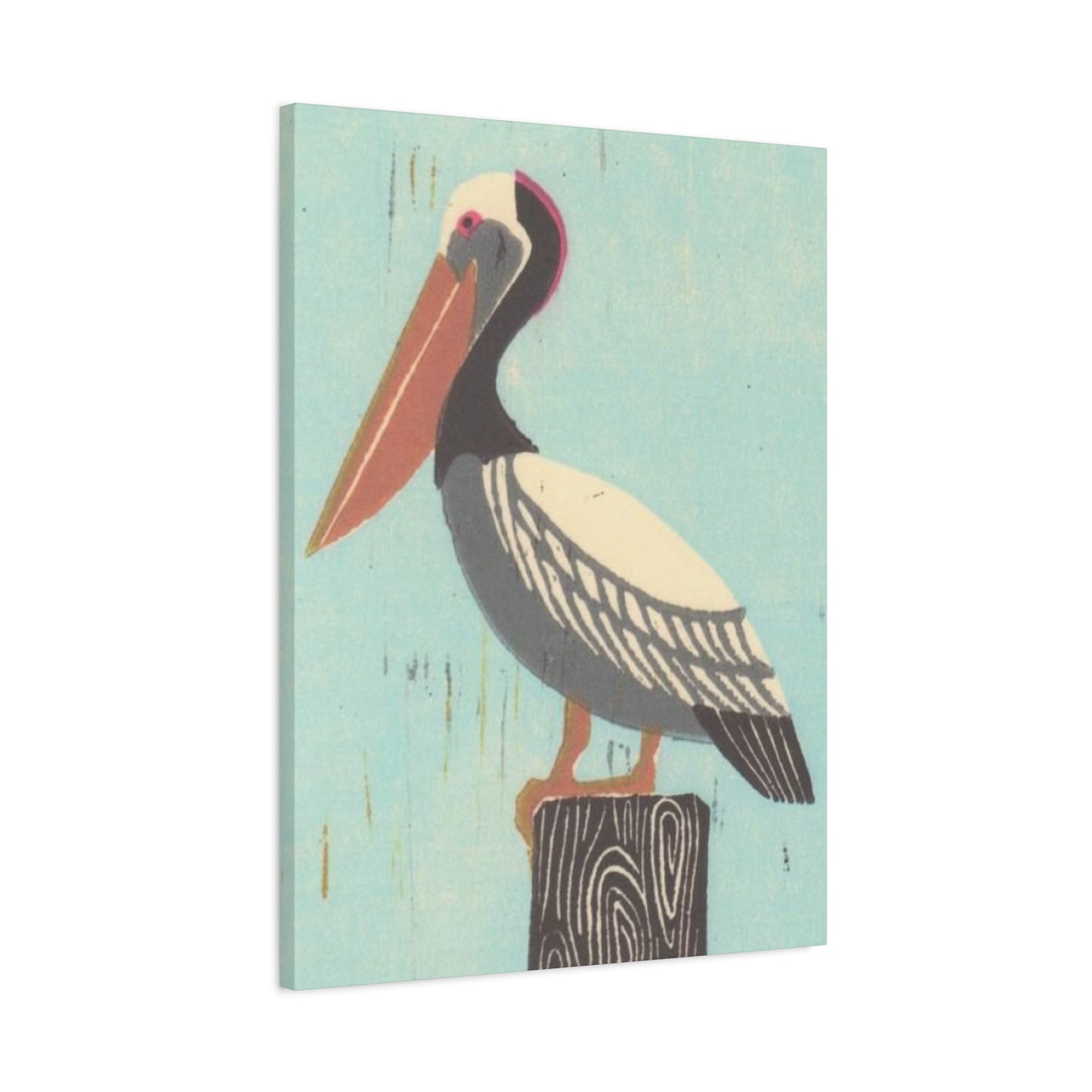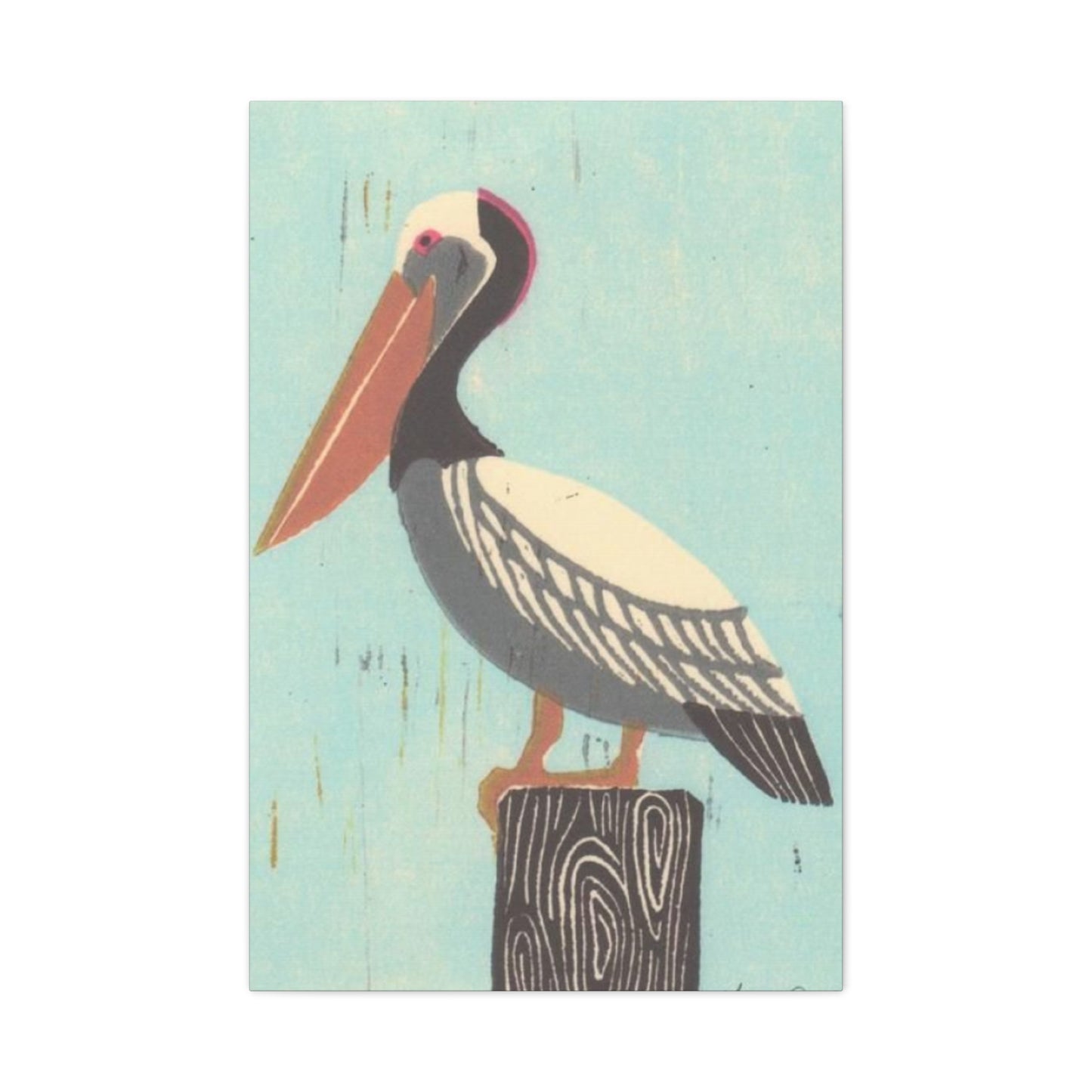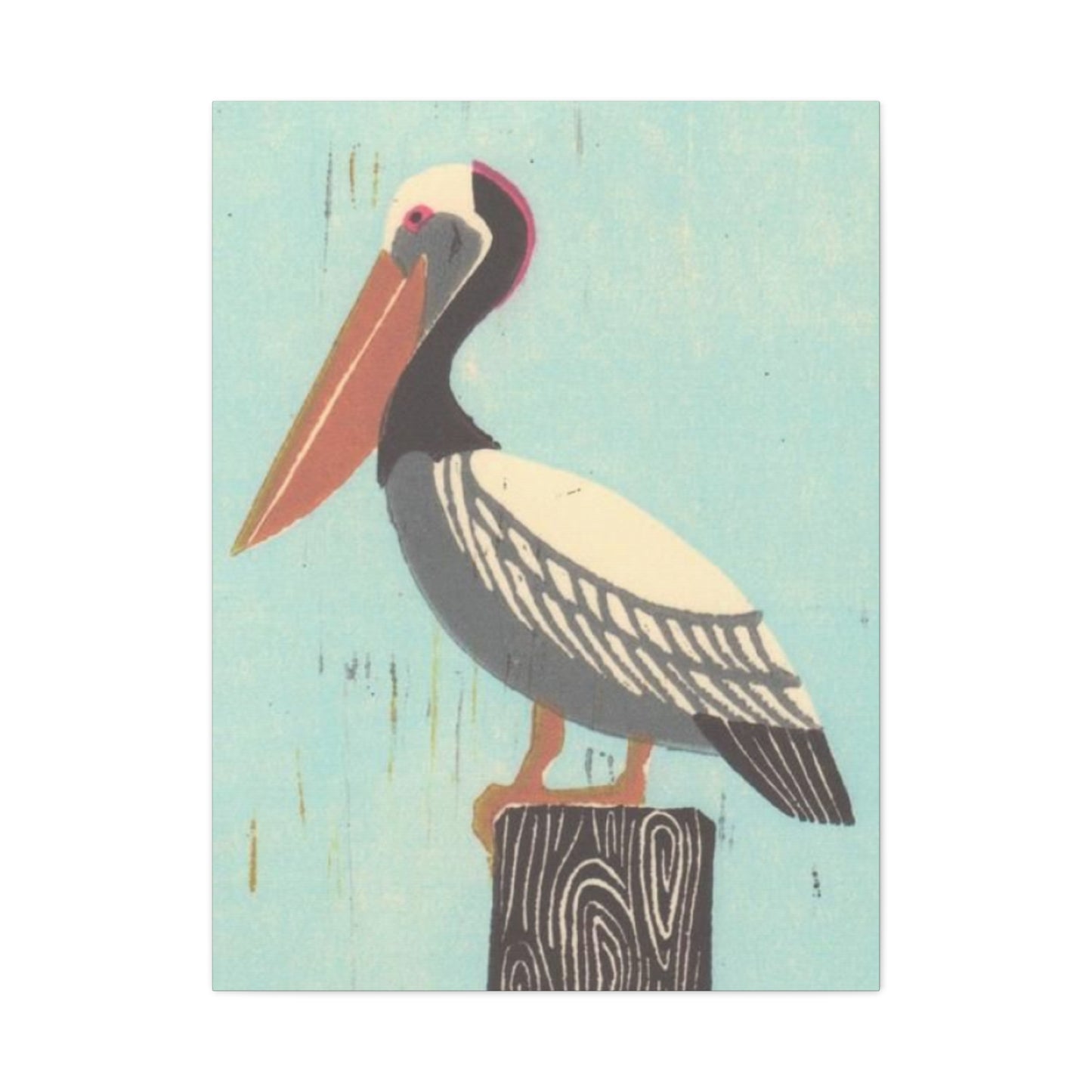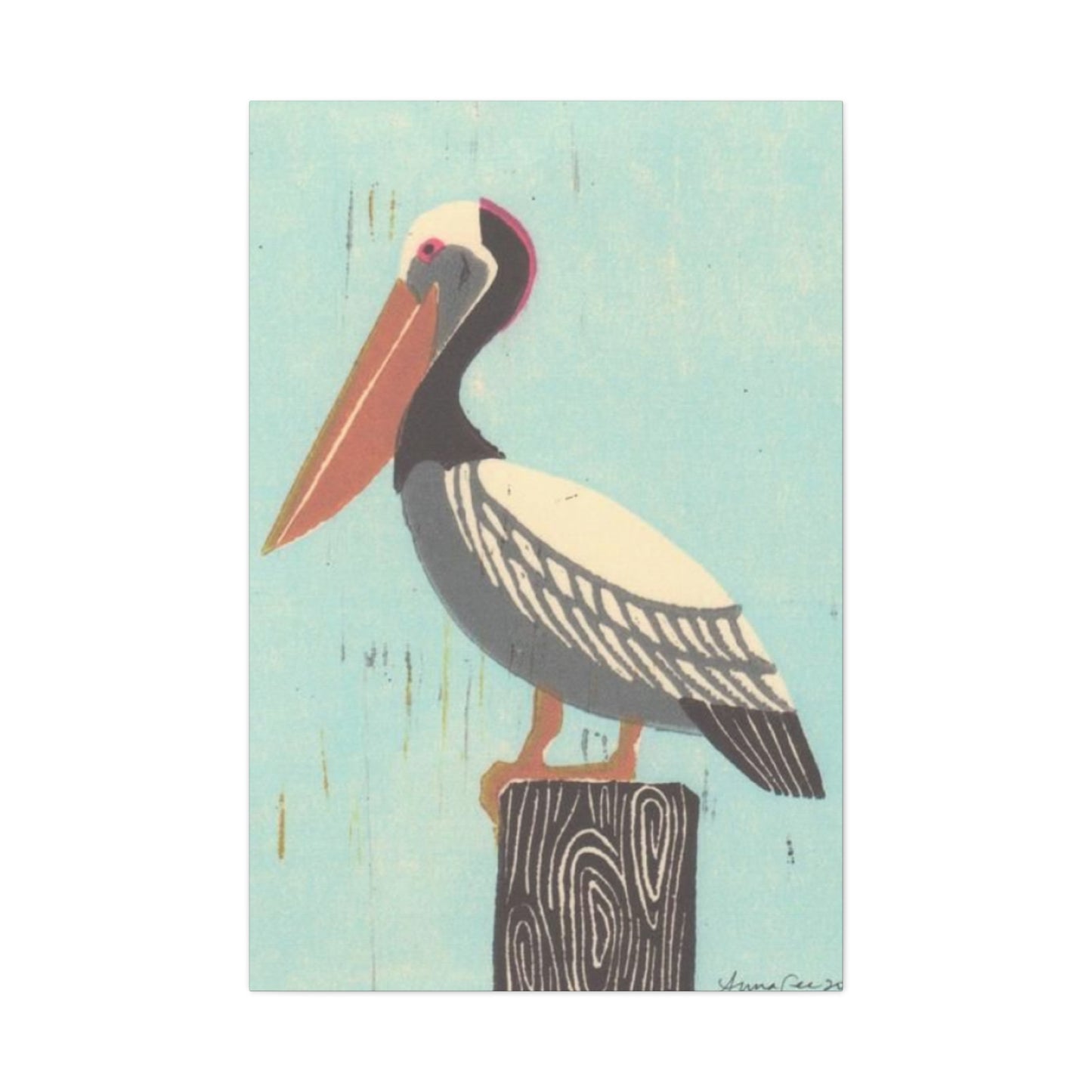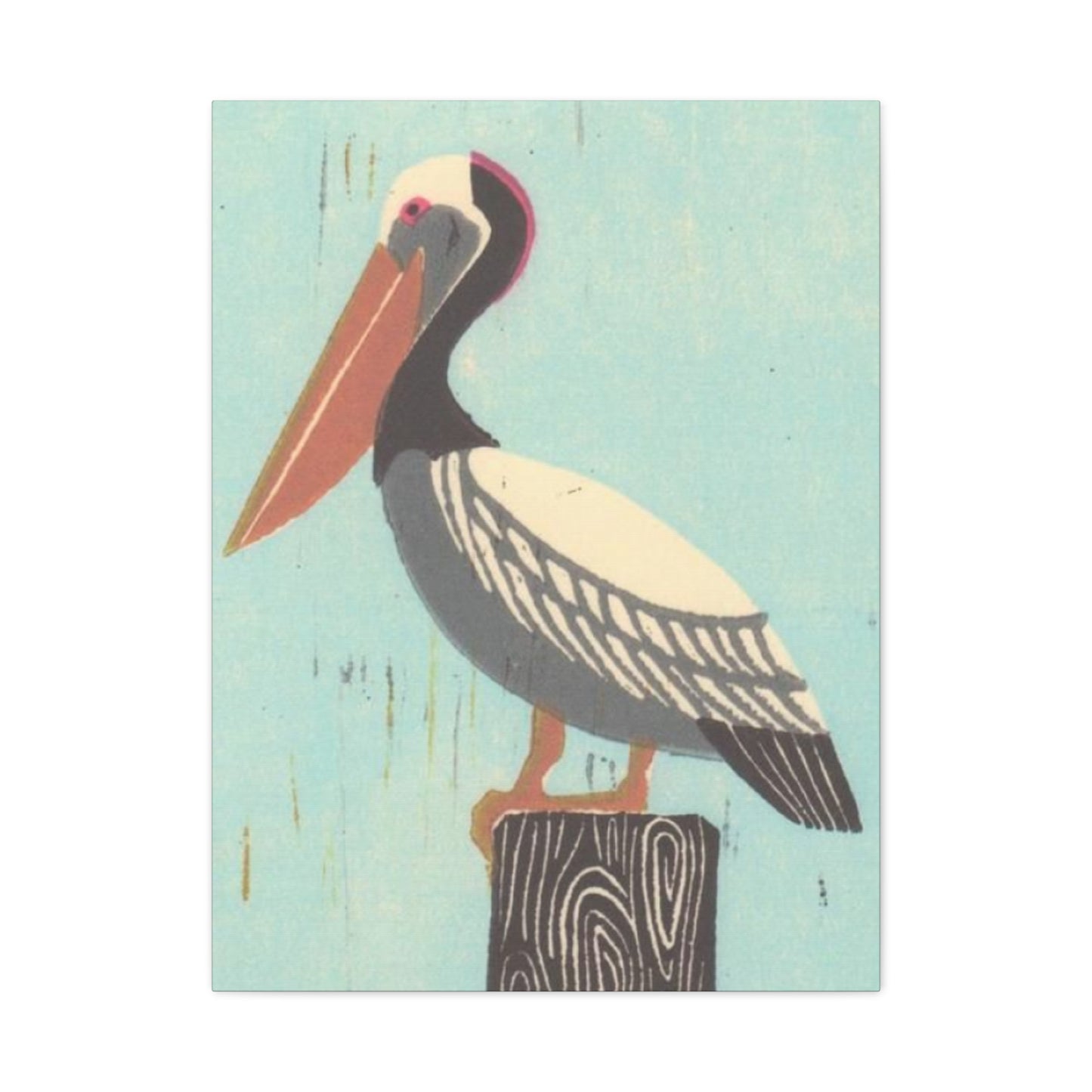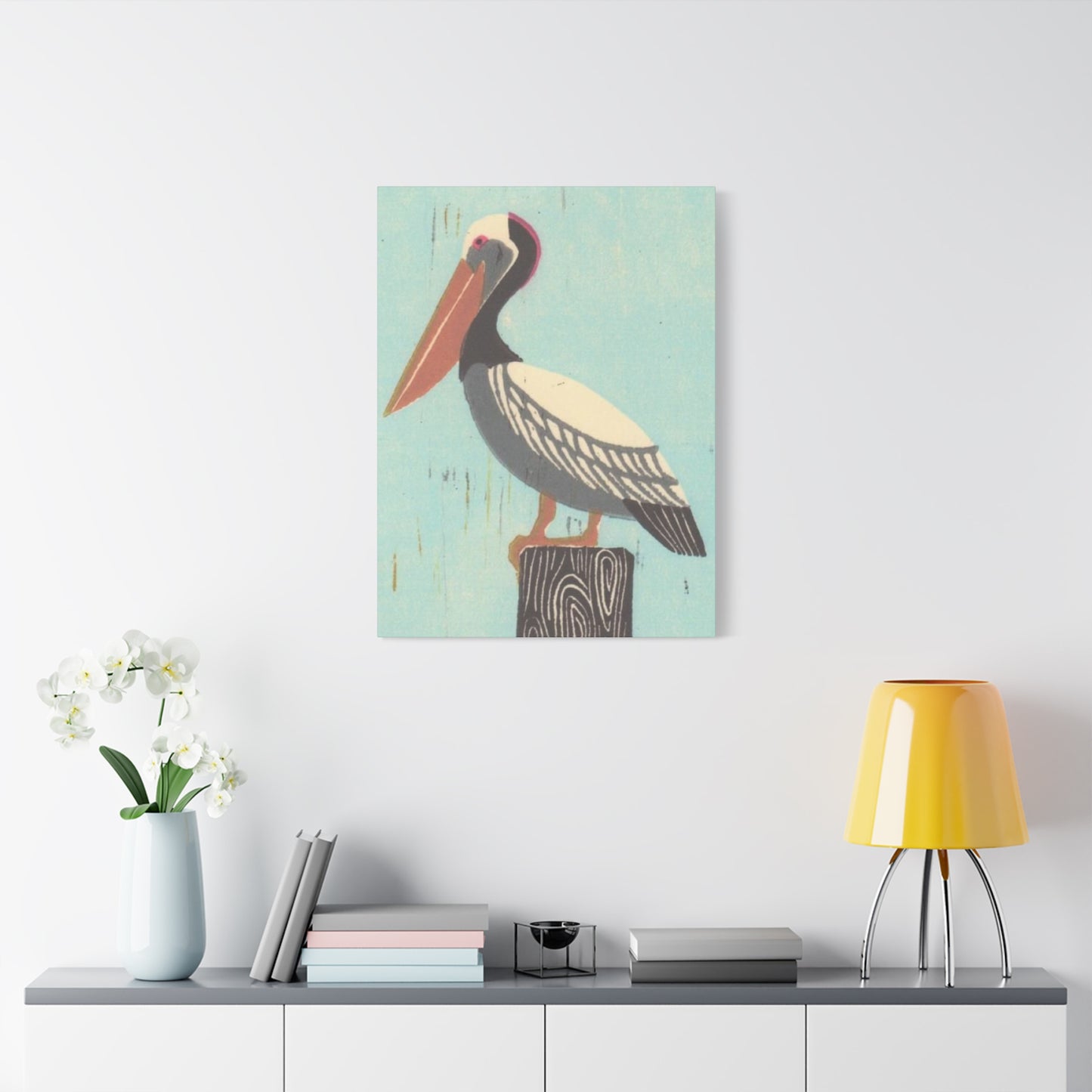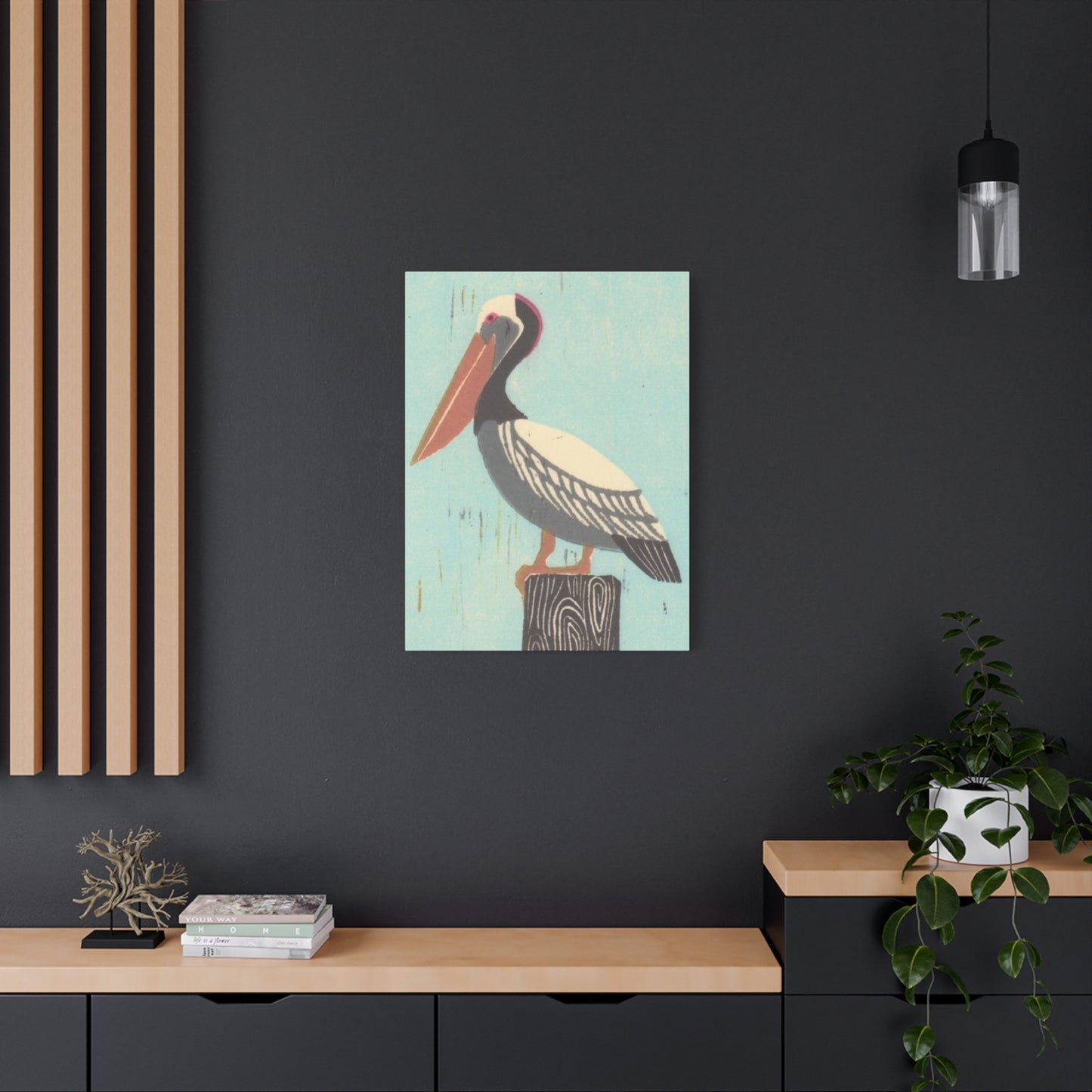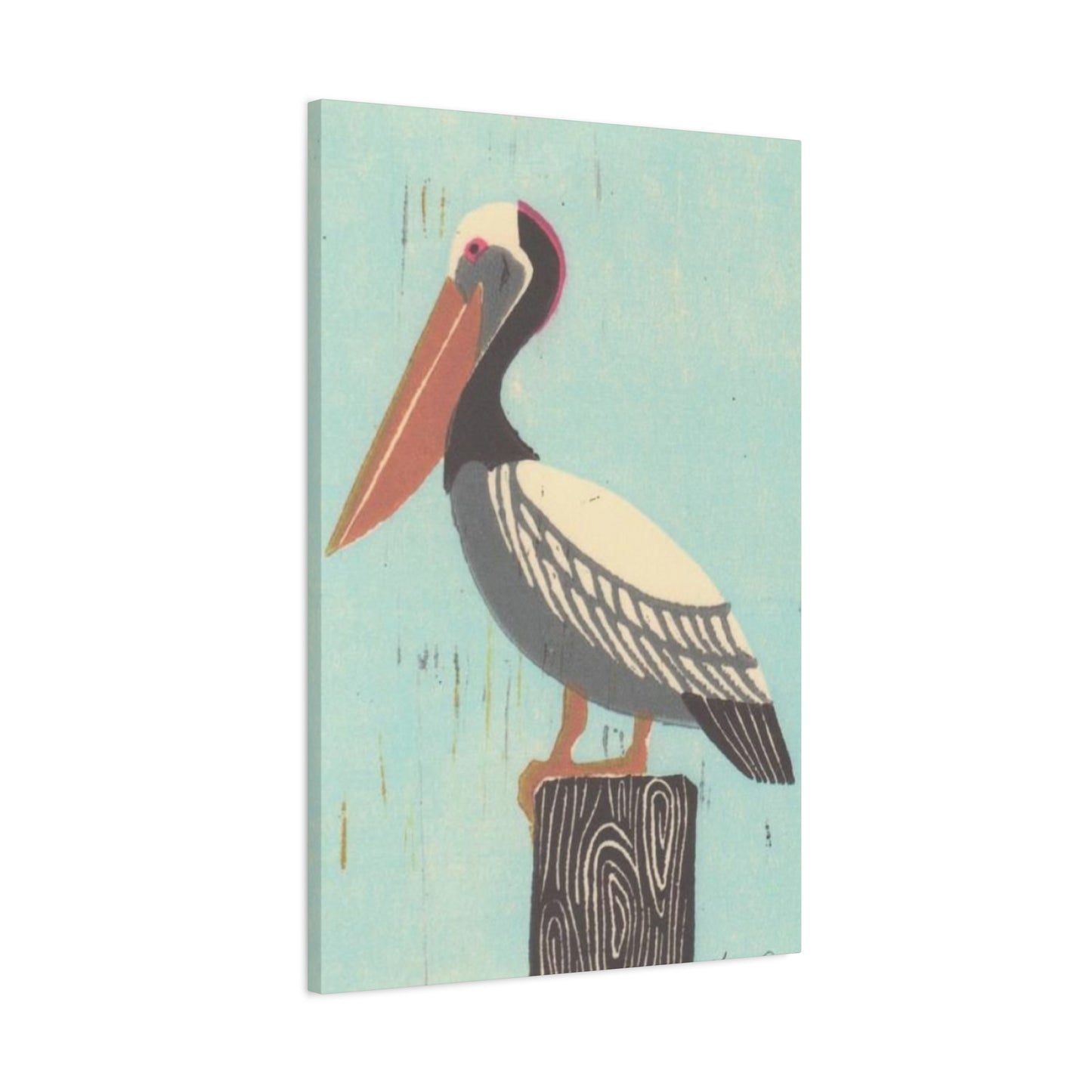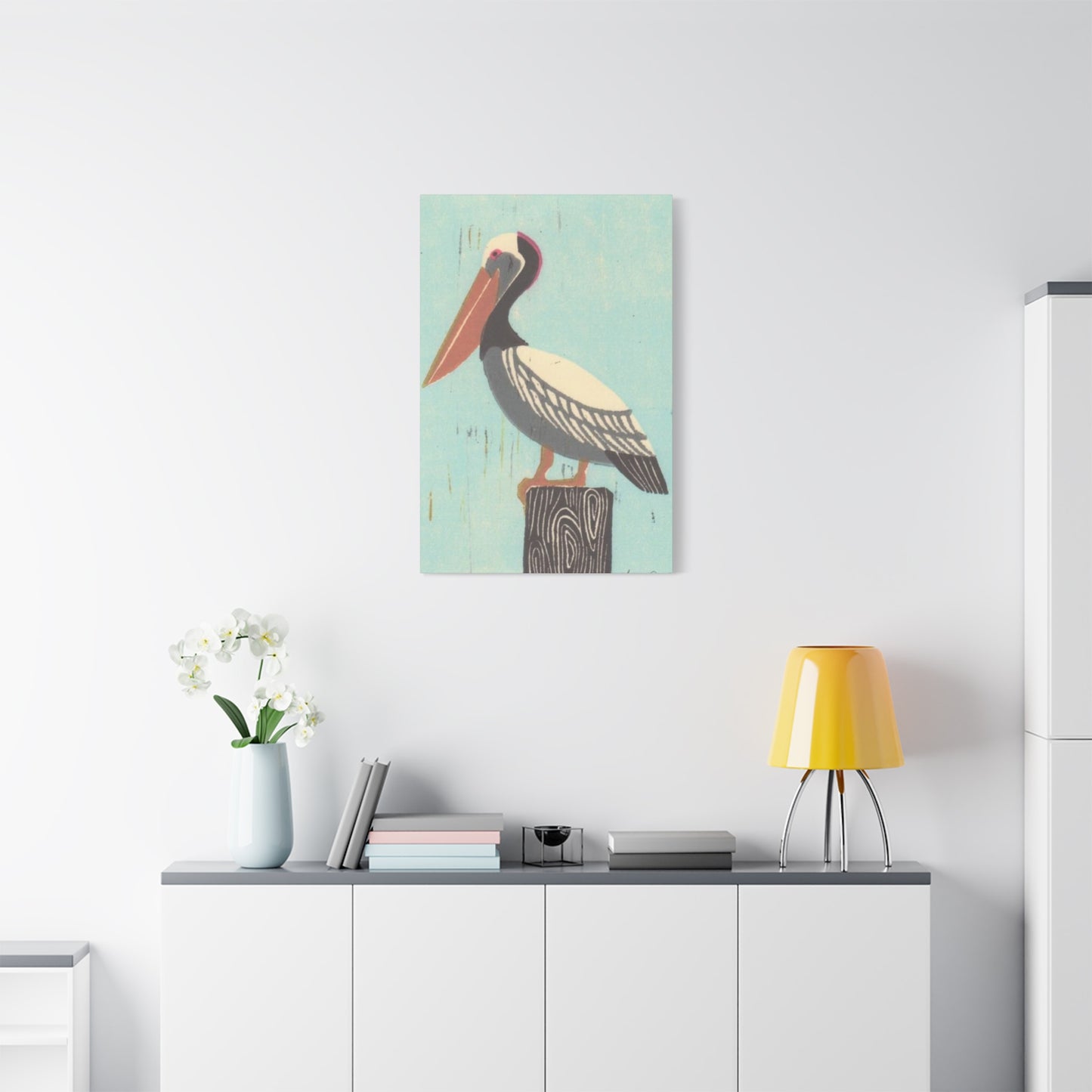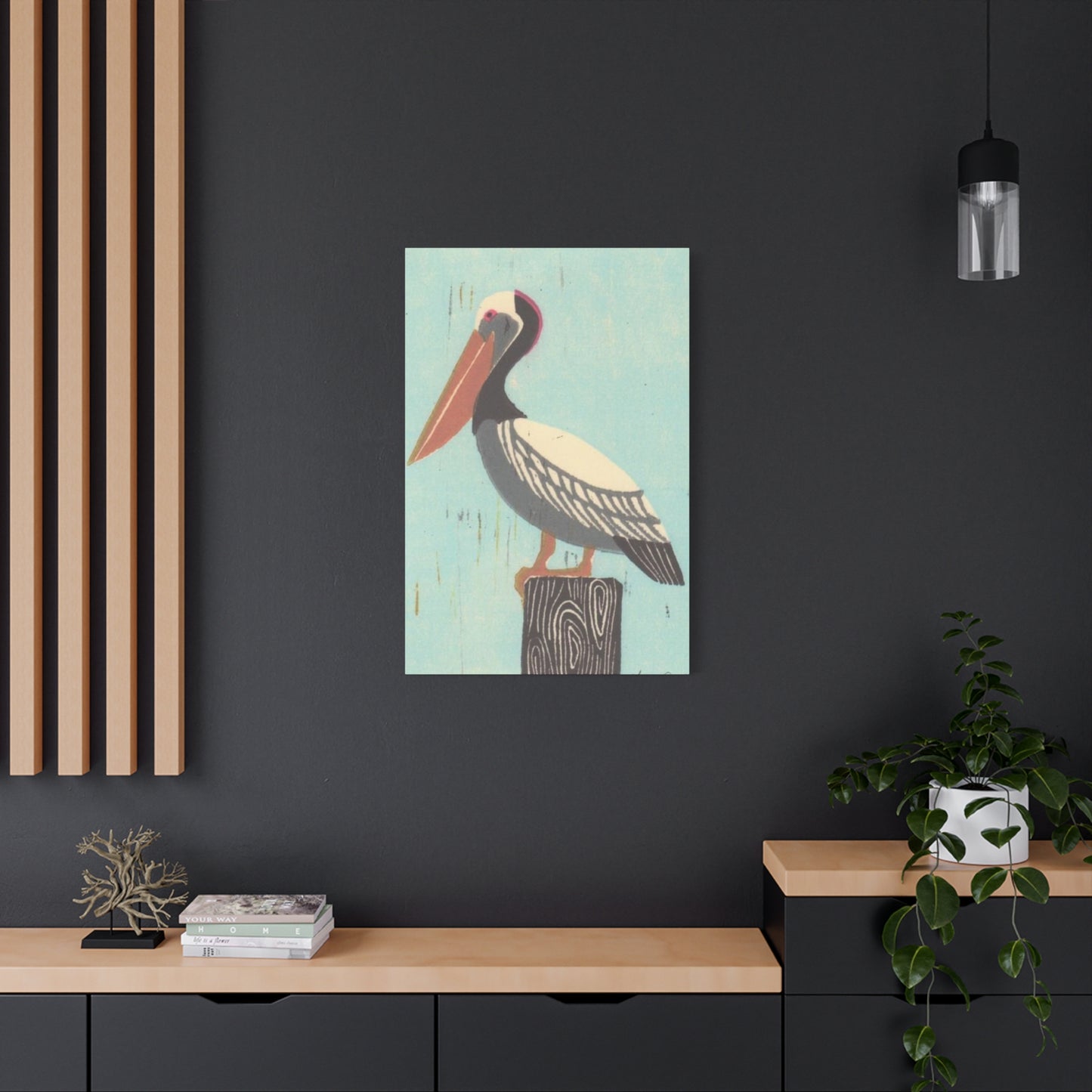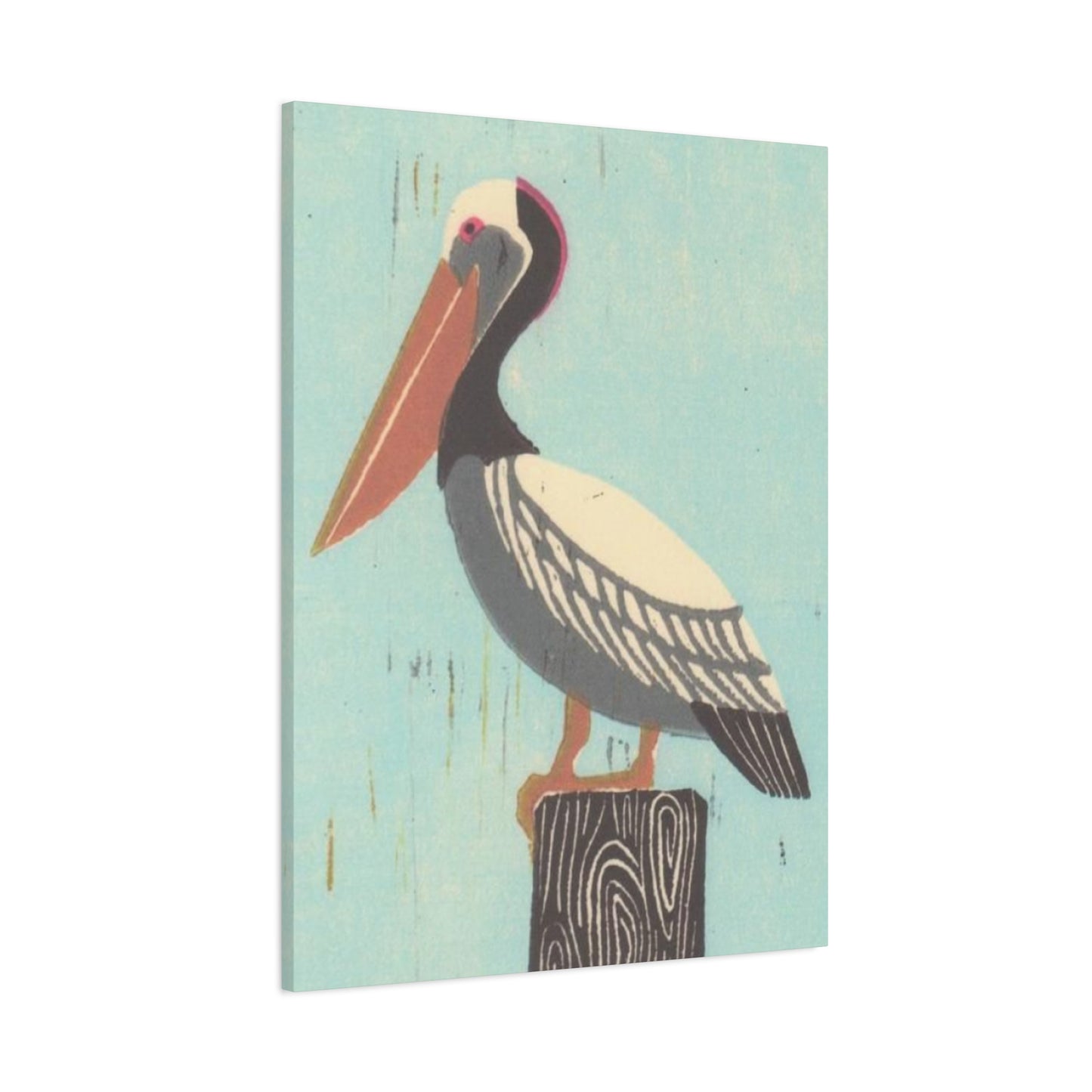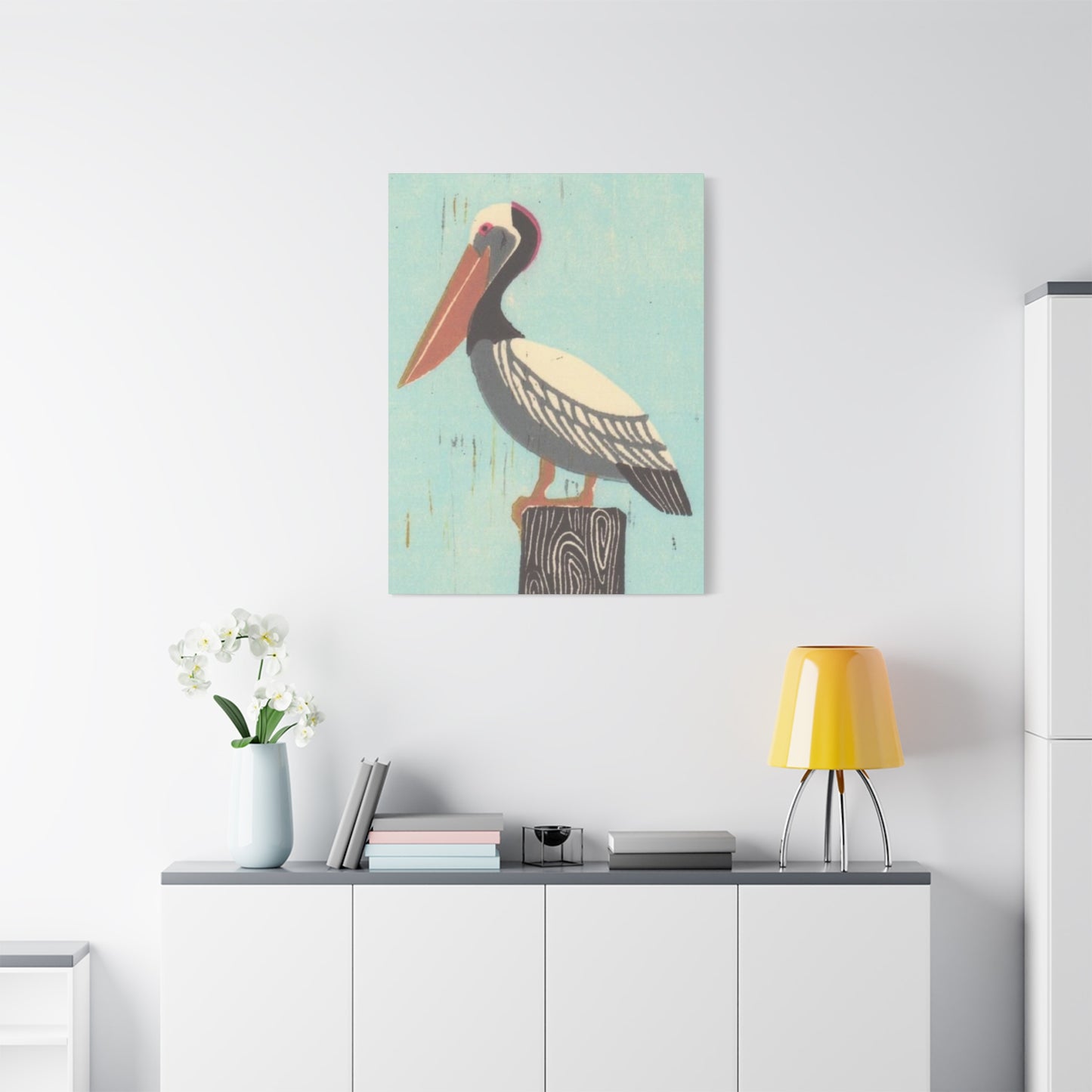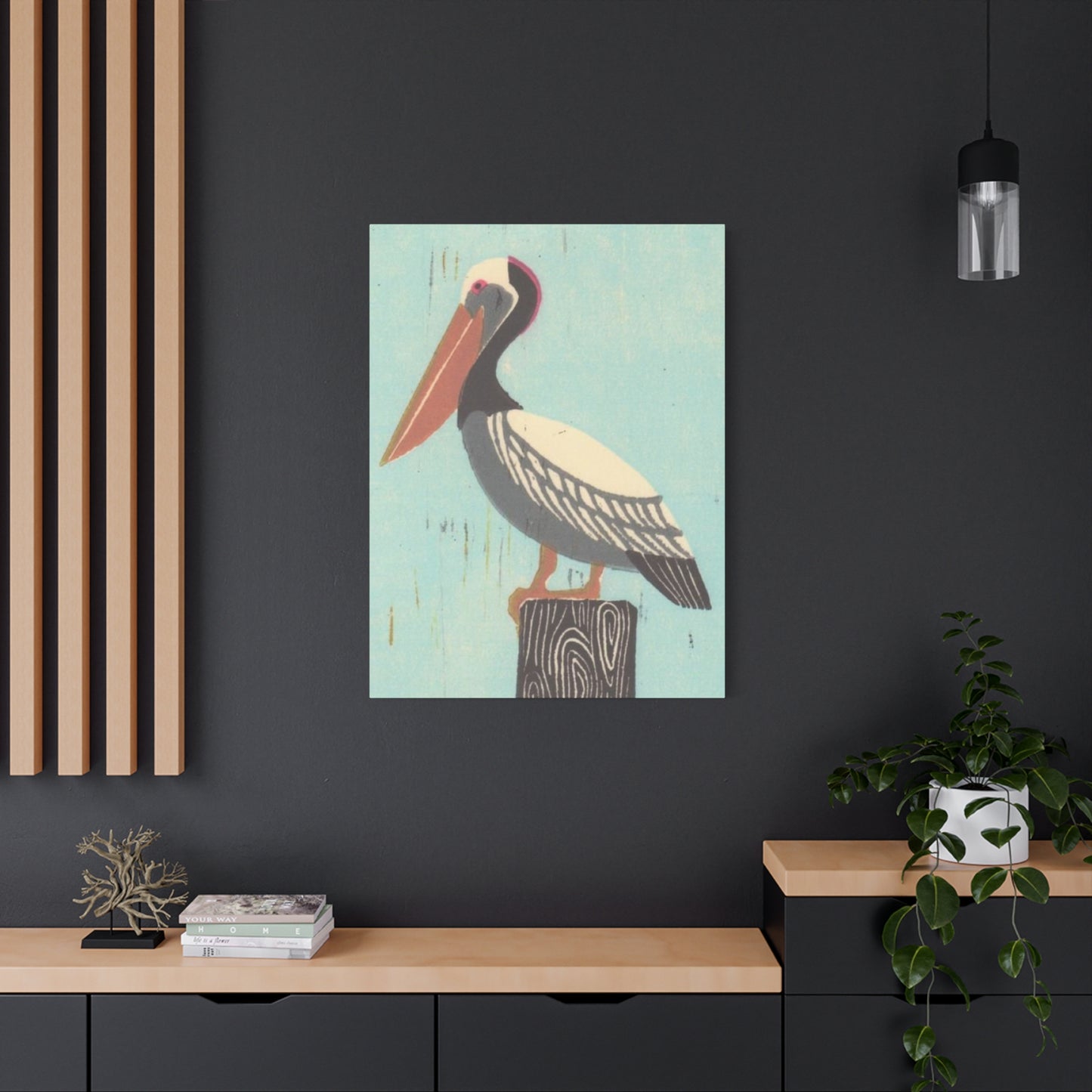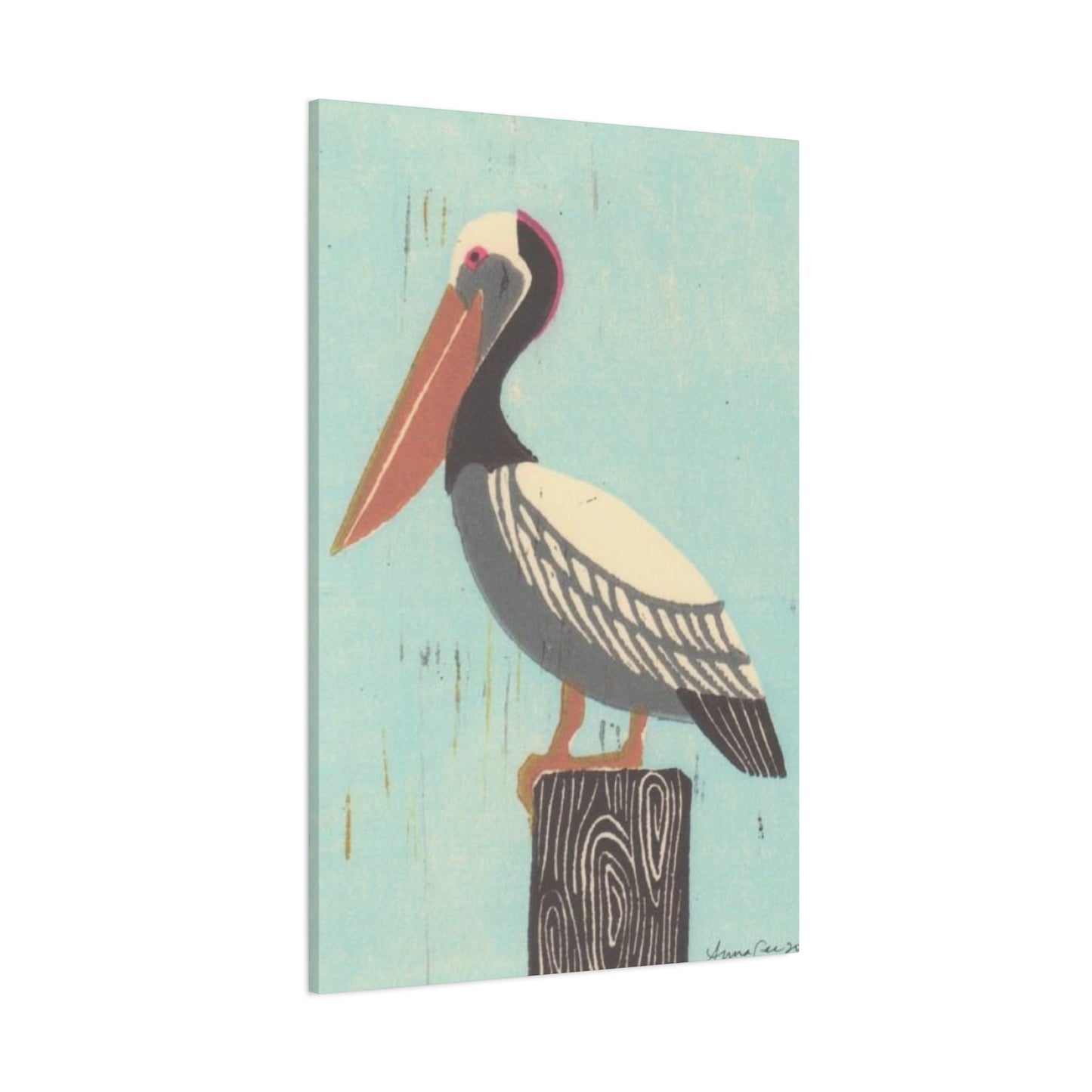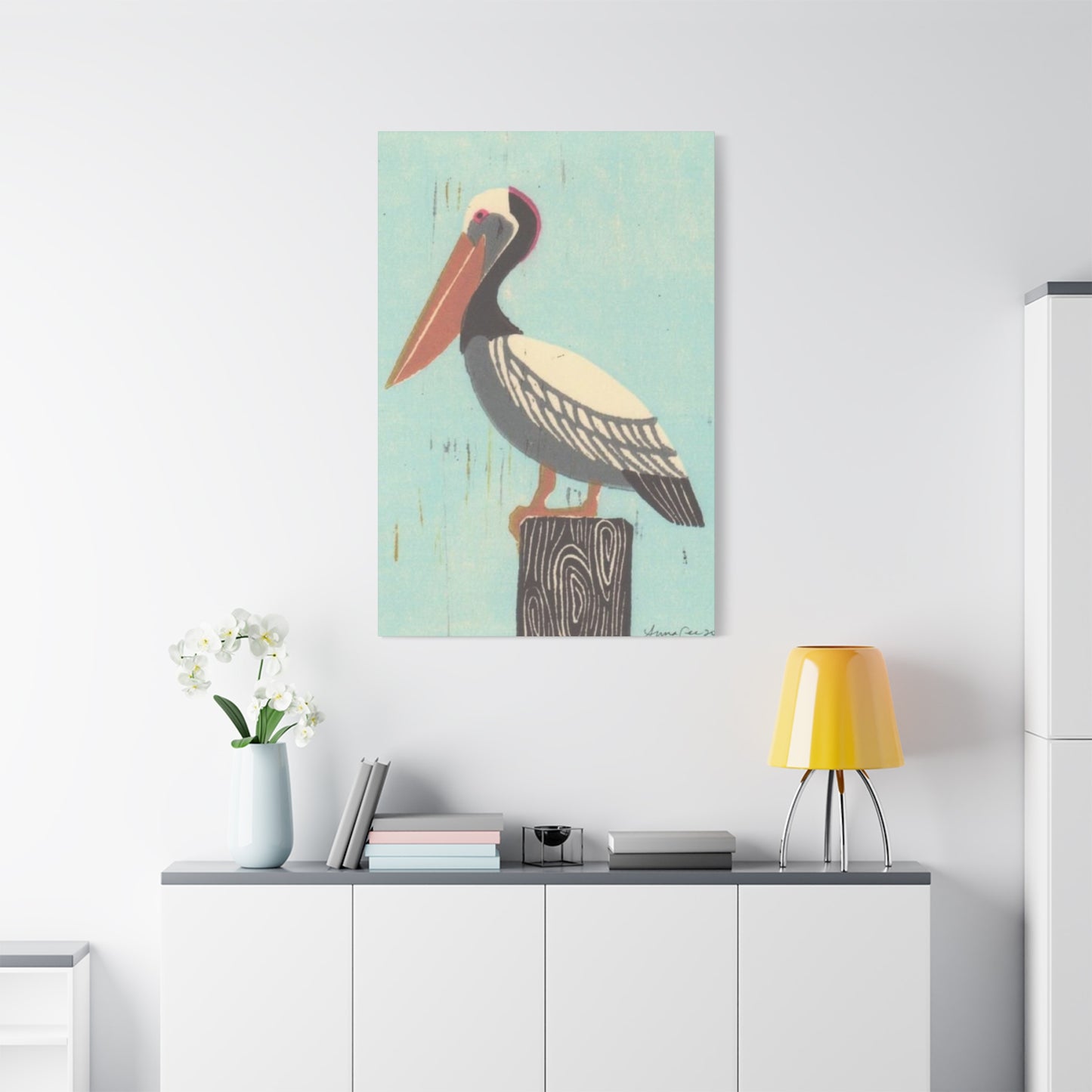Exploring the Artistic Appeal of Pelican Drawings with Vibrant Colors Wall Art
Creating the perfect coastal atmosphere in your home requires artwork that captures the essence of seaside living while adding personality and warmth to your spaces. Pelican beak art represents one of the most compelling choices for homeowners seeking to infuse their interiors with oceanic charm and vibrant energy. These magnificent seabirds, with their distinctive pouched bills and graceful presence, have long captivated artists and art enthusiasts who appreciate the intersection of natural beauty and artistic expression.
The appeal of pelican beak artwork extends beyond simple decoration, serving as a gateway to memories of sun-soaked beaches, gentle ocean breezes, and the rhythmic sound of waves against the shore. When artists focus on the pelican's most recognizable feature, they create pieces that immediately evoke the coastal lifestyle many homeowners dream of bringing indoors. The beak itself, with its unique structure and impressive size, offers artists incredible opportunities to explore color, texture, and form in ways that transform ordinary wall space into extraordinary focal points.
Contemporary pelican beak art embraces bold color palettes that range from realistic earth tones to imaginative rainbow hues, allowing homeowners to select pieces that complement their existing decor while making powerful visual statements. Artists working in this genre often incorporate elements of abstract expressionism, watercolor techniques, and mixed media approaches that enhance the natural beauty of these remarkable birds while adding layers of artistic sophistication.
The versatility of pelican beak artwork makes it suitable for various interior design styles, from traditional coastal themes to modern minimalist approaches. Whether displayed in living rooms, bedrooms, kitchens, or bathrooms, these pieces bring instant character and conversation-starting appeal to any environment. The natural curves and angles found in pelican anatomy provide artists with endless inspiration for creating compositions that feel both organic and deliberately designed.
How Colorful Pelican Drawings Brighten Your Space
The transformative power of colorful pelican drawings lies in their ability to inject energy, personality, and visual interest into spaces that might otherwise feel sterile or incomplete. These artistic interpretations of one of nature's most recognizable seabirds offer homeowners an opportunity to introduce elements of joy, whimsy, and natural beauty without overwhelming their existing design schemes.
Color psychology plays a significant role in how pelican artwork affects our living spaces and emotional well-being. Warm yellows and oranges found in many pelican beak interpretations can energize rooms and create feelings of happiness and optimism. Cool blues and greens often incorporated into backgrounds or water elements help establish calming atmospheres that promote relaxation and tranquility. When artists combine these color families within single pieces, they create dynamic visual experiences that can adapt to different lighting conditions throughout the day.
The scale and placement of colorful pelican drawings significantly impact their effectiveness in brightening spaces. Large-format pieces serve as commanding focal points that can anchor entire room designs, while smaller works function beautifully as part of gallery walls or intimate vignettes. The key lies in understanding how different sizes and orientations interact with existing furniture, architectural features, and natural light sources.
Artistic techniques used in creating colorful pelican drawings contribute substantially to their space-brightening effects. Watercolor approaches often result in luminous, translucent qualities that seem to glow when properly lit, while acrylic and oil techniques can produce rich, saturated colors that command attention from across large rooms. Digital art and mixed media approaches allow for experimentation with textures, patterns, and color combinations that might be impossible to achieve through traditional methods alone.
The emotional impact of colorful pelican artwork extends beyond simple aesthetic appreciation, connecting viewers with memories of coastal experiences, wildlife encounters, and natural wonder. This emotional resonance helps create spaces that feel more personal and meaningful, transforming houses into homes that reflect the inhabitants' personalities and aspirations.
Pelican Wall Art: A Splash of Coastal Charm
Incorporating pelican wall art into your interior design strategy represents one of the most effective ways to establish genuine coastal charm without relying on obvious or overdone maritime clichés. These magnificent seabirds embody the spirit of coastal living through their natural habitat, graceful movements, and distinctive appearance that immediately transports viewers to seaside environments.
The authenticity that pelican artwork brings to coastal-themed interiors stems from these birds' genuine connection to ocean environments. Unlike manufactured nautical decorations that can feel artificial or forced, pelican art draws its power from real wildlife that actually inhabits coastal regions around the world. This connection to authentic coastal ecosystems creates more meaningful and lasting design impact than synthetic alternatives.
Successful integration of pelican wall art requires careful consideration of color coordination, scale relationships, and thematic consistency throughout the space. The natural color palette found in pelican imagery, including warm beiges, rich browns, pristine whites, and ocean blues, provides excellent foundation colors that work harmoniously with other coastal design elements such as weathered wood, natural fibers, and sea-inspired accessories.
The positioning of pelican artwork within coastal-themed rooms demands attention to sight lines, lighting conditions, and relationship to other design elements. Strategic placement above seating areas, near windows with natural light, or as part of larger gallery wall arrangements can maximize the visual impact while maintaining design balance. The goal involves creating cohesive environments where pelican art feels integrated rather than applied as an afterthought.
Seasonal adaptability represents another advantage of pelican wall art in coastal-themed spaces. These pieces work equally well during summer months when coastal themes feel most natural and during winter seasons when homeowners seek reminders of warmer, sunnier destinations. The timeless appeal of wildlife art ensures that pelican pieces remain relevant and appealing regardless of changing design trends or seasonal preferences.
Beak Details That Bring Pelican Art to Life
The intricate details found within pelican beaks offer artists endless opportunities to create compelling, lifelike artwork that captures the essence of these remarkable birds while showcasing technical skill and creative vision. Understanding the anatomical complexity and functional purpose of pelican beaks enhances appreciation for artistic interpretations that highlight these distinctive features.
Pelican beaks represent marvels of natural engineering, designed specifically for efficient fishing and feeding behaviors that have evolved over millions of years. The expandable gular pouch, which can hold up to three gallons of water and fish, provides artists with fascinating structural elements to explore through various artistic techniques and interpretations. The smooth, curved upper mandible contrasts beautifully with the flexible lower portion, creating dynamic visual relationships that skilled artists can emphasize through careful attention to light, shadow, and color variation.
Texture exploration within beak artwork allows artists to convey the smooth, slightly glossy surface characteristics that make pelican bills so distinctive. Techniques such as careful brushwork, layered glazing, and strategic highlighting can replicate the subtle variations in surface texture that occur naturally on these remarkable appendages. Artists who master these techniques create pieces that invite closer inspection and reward detailed viewing.
Color variation within pelican beaks provides opportunities for artistic interpretation that can range from scientifically accurate representations to bold, imaginative color explorations. Natural beak colors typically include warm yellows, oranges, and muted browns, but artistic license allows for exciting experimentation with purples, greens, blues, and other unexpected hues that can complement specific interior design schemes or personal preferences.
The emotional expression that artists can convey through careful attention to beak positioning and orientation adds psychological depth to pelican artwork. Slightly open beaks can suggest calling or communication, while closed positions might convey rest or contemplation. These subtle differences in presentation can significantly impact the mood and character that artwork brings to living spaces.
Styling Tips for Colorful Bird Wall Decor
Creating cohesive and visually appealing displays with colorful bird wall decor requires understanding fundamental design principles while maintaining flexibility for personal expression and creative experimentation. Successful styling approaches balance color coordination, scale relationships, and thematic consistency to achieve professional-looking results that enhance rather than overwhelm existing interior design elements.
Color harmony represents the foundation of effective bird art styling, requiring careful consideration of how artwork colors interact with wall colors, furniture finishes, textile choices, and accent accessories throughout the space. Complementary color schemes, which utilize colors opposite each other on the color wheel, can create vibrant, energetic displays that command attention and create focal points. Analogous color schemes, featuring colors adjacent to each other on the color wheel, tend to produce more subtle, harmonious effects that integrate seamlessly with existing design elements.
Scale progression within bird art arrangements helps create visual rhythm and prevents displays from appearing random or unplanned. Mixing various sizes of artwork, from small intimate pieces to large statement works, allows for dynamic compositions that guide the eye through the display while maintaining overall balance. The rule of thirds, borrowed from photography and visual arts, can provide helpful guidance for positioning artwork within wall spaces and in relationship to furniture or architectural features.
Framing choices significantly impact the overall effectiveness of colorful bird wall decor, with frame styles, colors, and materials contributing substantially to the finished appearance. Consistent framing approaches tend to create more cohesive, professional-looking displays, while varied framing can add visual interest and personality when executed thoughtfully. Consider how frame choices interact with artwork colors and existing room finishes to ensure harmonious integration.
Lighting considerations play crucial roles in maximizing the impact of colorful bird artwork, with proper illumination enhancing color saturation, revealing textural details, and creating dramatic effects that transform ordinary displays into extraordinary focal points. Natural light from windows provides excellent illumination during daylight hours, while strategically placed accent lighting can maintain visual impact during evening hours and in spaces with limited natural light access.
The Symbolism Behind Pelicans in Art
Throughout human history, pelicans have captured the imagination of artists, writers, and cultural observers who recognize these remarkable birds as powerful symbols carrying deep spiritual, emotional, and philosophical significance. Understanding the rich symbolic traditions associated with pelicans enhances appreciation for contemporary artistic interpretations while connecting modern viewers with ancient wisdom and cultural heritage.
Christian symbolism has long associated pelicans with themes of sacrifice, resurrection, and parental devotion, stemming from medieval beliefs about pelican behavior during times of scarcity. According to traditional accounts, parent pelicans would pierce their own breasts to feed their young with their blood, creating powerful metaphors for selfless love and ultimate sacrifice. This symbolic association has influenced countless artistic interpretations throughout the centuries, from illuminated manuscripts to contemporary religious art.
Maritime cultures worldwide have developed their own symbolic interpretations of pelicans, often viewing these birds as harbingers of good fortune, successful fishing expeditions, and safe passage across dangerous waters. Coastal communities that depend on ocean resources for survival naturally develop deep connections with seabirds that share their marine environment, leading to symbolic associations with abundance, prosperity, and harmony with natural forces.
Environmental symbolism connects pelicans with themes of conservation, ecosystem health, and the delicate balance between human activity and natural preservation. As indicator species that reflect the overall health of marine environments, pelicans serve as powerful symbols for environmental awareness and stewardship responsibilities that extend beyond individual concerns to encompass global ecological well-being.
Modern psychological interpretations often associate pelican imagery with themes of community cooperation, resource sharing, and social responsibility. The cooperative feeding behaviors exhibited by pelican flocks provide contemporary symbols for teamwork, mutual support, and collective problem-solving that resonate with current social and professional challenges.
Artistic freedom allows contemporary creators to develop personal symbolic associations with pelican imagery, incorporating these birds into works that explore individual themes of freedom, grace, adaptability, and connection with natural beauty. This evolution of symbolic meaning ensures that pelican art remains relevant and meaningful for contemporary audiences while honoring traditional cultural associations.
Perfect Wall Art for Beach-Themed Rooms
Selecting appropriate wall art for beach-themed rooms requires balancing authenticity with aesthetic appeal, ensuring that chosen pieces enhance the desired coastal atmosphere without creating overwhelming or clichéd environments. Pelican artwork offers exceptional versatility for beach-themed spaces, providing natural coastal connections while allowing for creative interpretation and personal expression.
Authentic beach house aesthetics benefit from artwork that reflects genuine coastal experiences rather than manufactured maritime imagery. Pelican art succeeds in beach-themed rooms because these birds actually inhabit coastal environments, creating authentic connections between interior design choices and real seaside experiences. This authenticity helps distinguish sophisticated beach-themed interiors from generic nautical decorations that can feel artificial or forced.
Color palette coordination becomes crucial when integrating pelican artwork into beach-themed rooms, with successful approaches often emphasizing natural coastal colors such as sandy beiges, ocean blues, seafoam greens, and weathered wood tones. Pelican imagery naturally incorporates many of these colors, making integration with existing beach-themed elements relatively straightforward while allowing for creative color interpretation and artistic license.
Texture and material considerations play important roles in beach-themed room success, with pelican artwork contributing to desired textural variety through different artistic techniques and presentation methods. Canvas prints can provide casual, relaxed feelings appropriate for informal beach house environments, while framed watercolor pieces might suit more refined coastal elegance approaches. Mixed media works can add contemporary sophistication while maintaining coastal charm.
Scale relationships within beach-themed rooms often benefit from varied sizing approaches that mirror the organic, unstructured feeling of natural beach environments. Combining large statement pieces with smaller complementary works creates visual interest and prevents rooms from feeling too formal or rigid. Pelican artwork adapts well to these varied scale approaches, working effectively as both commanding focal points and subtle accent pieces.
Seasonal flexibility represents another advantage of pelican artwork in beach-themed rooms, with these pieces maintaining relevance and appeal throughout the year regardless of weather conditions or seasonal changes. While overtly summery beach decorations might feel inappropriate during winter months, wildlife art maintains timeless appeal that works effectively in all seasons.
Drawing Attention with Bold Beak Colors
The strategic use of bold, unconventional colors in pelican beak artwork creates opportunities to develop striking focal points that energize spaces while maintaining connections to natural imagery and coastal themes. Artists who embrace creative color interpretation can produce pieces that stand out dramatically while still honoring the essential character and appeal of these magnificent seabirds.
Color theory principles provide valuable guidance for artists and collectors interested in bold beak color approaches, with understanding of complementary, analogous, and triadic color relationships helping inform decisions about which bold colors will work most effectively in specific contexts. Unexpected color choices such as vibrant purples, electric blues, sunset oranges, or lime greens can transform traditional pelican imagery into contemporary statement pieces that command attention and spark conversation.
Psychological color responses play important roles in how bold beak colors affect viewers and spaces, with warm colors typically generating feelings of energy, excitement, and optimism, while cool colors tend to promote calm, sophisticated, and contemplative moods. Understanding these psychological associations helps artists and collectors make informed decisions about which bold color approaches will best serve their intended purposes and environments.
Artistic techniques for achieving bold beak colors vary significantly depending on the chosen medium and desired effects. Acrylic paints offer excellent color saturation and coverage for bold approaches, while watercolors can create luminous, translucent effects that seem to glow from within. Digital art techniques provide unlimited color possibilities and allow for experimentation with gradients, patterns, and special effects that might be impossible to achieve through traditional methods.
Integration challenges arise when incorporating artwork featuring bold beak colors into existing interior design schemes, requiring careful consideration of how these statement pieces will interact with wall colors, furniture finishes, and other decorative elements. Successful integration often involves either coordinating bold artwork colors with existing accent colors or using the artwork as inspiration for developing new color schemes throughout the space.
Lighting considerations become particularly important when displaying artwork featuring bold beak colors, with proper illumination essential for maintaining color accuracy and preventing unwanted color shifts that can occur under different lighting conditions. LED lighting systems with adjustable color temperatures can help maintain consistent color appearance throughout different times of day and lighting situations.
Mixing Wildlife and Color in Modern Decor
Contemporary interior design increasingly embraces the combination of wildlife imagery with bold color approaches, creating sophisticated spaces that celebrate natural beauty while maintaining contemporary aesthetic sensibilities. This design trend reflects growing appreciation for biophilic design principles that incorporate natural elements into built environments for improved well-being and connection with the natural world.
Modern wildlife art departs significantly from traditional realistic representations, embracing abstract interpretations, geometric stylizations, and experimental color palettes that align with contemporary design preferences while honoring the essential spirit and character of depicted animals. Pelican artwork exemplifies this evolution, with artists creating pieces that capture the grace and majesty of these birds through innovative techniques and unexpected visual approaches.
Color symbolism in modern wildlife art often extends beyond natural accuracy to explore emotional, psychological, and cultural associations that enhance the impact and meaning of artistic interpretations. Purple pelicans might symbolize luxury and sophistication, while green versions could represent environmental consciousness or growth. These symbolic color choices allow artwork to communicate complex ideas and emotions that extend beyond simple animal representation.
Integration strategies for wildlife art in modern decor require understanding how these pieces function within contemporary design principles such as minimalism, functionality, and clean aesthetic lines. Wildlife artwork can serve as organic counterpoints to stark modern furnishings, providing visual warmth and natural texture that prevent contemporary spaces from feeling cold or sterile.
Scale and proportion considerations become particularly important when incorporating wildlife art into modern decor schemes, with contemporary design often favoring bold, oversized pieces that make dramatic statements rather than collections of smaller works that might feel cluttered or busy. Single large pelican pieces can anchor entire room designs while maintaining the clean, uncluttered aesthetic that modern design principles demand.
Material and presentation choices significantly impact how wildlife art integrates with modern decor, with frameless mounting, acrylic panels, metal prints, and other contemporary presentation methods often working more effectively than traditional framing approaches. These modern presentation techniques can help wildlife art feel more integrated with contemporary interior design elements while maintaining visual impact and artistic integrity.
Using Pelican Prints in a Nautical Gallery Wall
Creating compelling nautical gallery walls that incorporate pelican prints requires understanding composition principles, thematic coherence, and visual balance while avoiding the common pitfall of creating displays that feel cluttered or overwhelming. Successful gallery walls tell cohesive visual stories that enhance spaces while reflecting the inhabitants' personalities and interests.
Thematic consistency provides the foundation for effective nautical gallery walls, with pelican prints serving as natural anchor pieces that establish coastal themes while allowing for supporting elements such as seashells, maritime maps, lighthouse imagery, or abstract ocean interpretations. The key lies in maintaining enough thematic unity to create coherence while allowing sufficient variety to maintain visual interest and prevent displays from feeling repetitive or predictable.
Composition strategies for nautical gallery walls often benefit from establishing visual hierarchies that guide viewers through the display in deliberate, pleasing patterns. Larger pelican prints can serve as primary focal points around which smaller supporting pieces are arranged, creating dynamic compositions that feel organized rather than random. Grid layouts provide structured approaches suitable for formal spaces, while organic arrangements might better suit casual coastal environments.
Color coordination throughout nautical gallery walls ensures visual harmony while preventing individual pieces from competing destructively for attention. Pelican prints naturally incorporate many traditional nautical colors such as blues, whites, and sandy tones, making them excellent foundation pieces for broader color schemes. Supporting pieces should either complement or provide strategic contrast with the pelican artwork colors to maintain overall balance.
Frame selection and consistency play crucial roles in gallery wall success, with coordinated framing approaches typically producing more professional and polished results than random frame combinations. Consider how frame styles, colors, and materials interact with both the artwork and the surrounding room elements to ensure seamless integration with existing design schemes.
Spacing and layout considerations require attention to sight lines, traffic patterns, and viewing distances to ensure that gallery walls remain accessible and enjoyable from multiple positions within the room. Professional spacing guidelines suggest maintaining consistent gaps between pieces while ensuring adequate wall space around the entire arrangement to prevent displays from feeling cramped or overwhelming.
Fun and Whimsical Bird Art for Nature Lovers
Nature enthusiasts often gravitate toward artistic interpretations that capture the joy, wonder, and playful aspects of wildlife encounters while maintaining respect for the natural world and its inhabitants. Whimsical bird art, particularly pelican artwork that embraces creative interpretation and artistic license, provides perfect opportunities to celebrate natural beauty while adding personality and charm to living spaces.
Whimsical artistic approaches often incorporate elements of fantasy, humor, and creative interpretation that transform realistic bird imagery into delightful, personality-filled pieces that spark conversation and bring smiles to viewers. Artists might exaggerate certain pelican characteristics, add unexpected accessories or settings, or employ imaginative color schemes that create magical, dreamlike qualities while honoring the essential spirit of these remarkable birds.
Anthropomorphic elements in whimsical bird art can create emotional connections between viewers and depicted animals, allowing people to see personality traits, emotions, and human-like qualities that make the artwork more relatable and engaging. Pelicans with expressive eyes, thoughtful poses, or suggested emotional states can transform from simple wildlife representations into character studies that invite ongoing contemplation and interpretation.
Artistic techniques suitable for whimsical bird art encompass a wide range of approaches, from loose, expressive watercolor washes that suggest rather than define forms, to detailed mixed media works that incorporate collage elements, patterns, and textures. The key lies in maintaining enough recognizable pelican characteristics to preserve species identity while allowing sufficient creative freedom to achieve desired whimsical effects.
Integration of whimsical bird art into nature-focused interiors requires balancing playful elements with overall design sophistication to avoid creating spaces that feel childish or unrefined. The goal involves achieving designs that celebrate joy and wonder while maintaining adult appeal and lasting interest. Whimsical pieces can serve as delightful counterpoints to more serious design elements, creating balanced environments that feel both sophisticated and approachable.
Target audience considerations for whimsical bird art extend beyond age demographics to encompass personality types, lifestyle preferences, and emotional needs. People who appreciate whimsical art often value creativity, imagination, and emotional expression over strict realism or conventional approaches. Understanding these preferences helps guide artistic choices and presentation decisions that will resonate most effectively with intended audiences.
Coastal Calm Meets Colorful Expression
The intersection of coastal tranquility and vibrant artistic expression creates unique opportunities for interior design approaches that honor both the peaceful aspects of seaside living and the energizing effects of bold color choices. This design philosophy recognizes that coastal environments can inspire both restful contemplation and joyful celebration, depending on individual needs and preferences.
Balancing elements represents the key challenge in combining coastal calm with colorful expression, requiring careful consideration of how different design choices interact to create cohesive environments that serve multiple emotional and functional needs. Successful approaches often establish peaceful foundation elements through natural materials, organic textures, and soothing color palettes, then introduce energizing accents through strategic placement of colorful artwork, textiles, or accessories.
Pelican artwork excels in this design approach because these birds naturally embody both tranquil and dynamic qualities depending on their depicted activities and artistic interpretation. Resting pelicans can convey peaceful, contemplative moods appropriate for relaxation-focused spaces, while flying or active pelicans might energize areas intended for social interaction or creative activities.
Color psychology principles provide valuable guidance for achieving effective balance between calm and colorful elements, with understanding of how different colors affect mood and energy levels helping inform decisions about which colors to emphasize and where to place them within spaces. Cool colors typically promote relaxation and calm, while warm colors tend to energize and stimulate, allowing for strategic placement that supports specific functional needs.
Spatial considerations influence how coastal calm and colorful expression can be successfully combined, with larger spaces often accommodating more dramatic color contrasts and bold artistic statements than smaller, more intimate environments. Understanding the scale relationships between spaces and artwork helps ensure that design choices enhance rather than overwhelm intended functions and atmospheres.
Seasonal adaptability becomes particularly important in coastal calm and colorful expression approaches, with successful designs maintaining appeal and appropriateness throughout changing seasons and varying natural lighting conditions. Pelican artwork contributes to this adaptability through timeless appeal that works effectively regardless of seasonal decorating trends or weather-related mood changes.
Pelican Beak Art for Kids' Rooms and Cottages
Children's spaces and cottage environments share common needs for artwork that feels approachable, cheerful, and non-intimidating while maintaining sufficient visual interest to support ongoing engagement and enjoyment. Pelican beak art offers excellent solutions for these environments, providing recognizable wildlife imagery that educates while entertaining and connects young people with natural world appreciation.
Age-appropriate artistic approaches for children's spaces often emphasize clear, readable imagery with strong color contrasts and engaging details that reward close inspection and support learning opportunities. Pelican beak artwork can incorporate educational elements such as anatomical accuracy, habitat information, or behavioral insights while maintaining appealing visual presentation that captures and holds children's attention.
Safety considerations for children's room artwork extend beyond obvious concerns about sharp edges or toxic materials to encompass psychological and developmental appropriateness. Pelican imagery typically conveys positive, non-threatening associations that support healthy emotional development while introducing children to wildlife appreciation and environmental awareness concepts that can influence lifelong attitudes and behaviors.
Cottage environments often benefit from artwork that feels casual, unpretentious, and connected to local natural environments, making pelican beak art particularly appropriate for coastal cottage settings where these birds might actually be observed in their natural habitats. This authenticity helps create meaningful connections between indoor decorating choices and outdoor experiences that cottage living often emphasizes.
Durability requirements for children's spaces and cottage environments often exceed those of formal adult living areas, with artwork needing to withstand higher humidity levels, more frequent cleaning, and potential handling by curious young visitors. Canvas prints, laminated works, and other robust presentation methods can provide necessary durability while maintaining visual appeal and artistic integrity.
Interactive potential within pelican beak artwork can enhance its appropriateness for children's spaces, with pieces that invite questions, encourage storytelling, or support educational activities providing additional value beyond simple decoration. Artists who consider these interactive possibilities can create works that serve multiple functions within children's environments while maintaining lasting appeal as young people grow and develop.
Combining Watercolor and Line in Bird Drawings
The artistic combination of watercolor techniques with linear elements creates unique opportunities for bird artwork that captures both the fluid, organic nature of these creatures and the structural definition necessary for clear species identification and visual impact. This mixed media approach allows artists to explore the best aspects of both techniques while creating distinctive works that stand out in contemporary art markets.
Watercolor characteristics such as transparency, flow, and color blending naturally complement bird imagery by capturing the soft, feathered textures and subtle color variations found in natural pelican plumage. The unpredictable nature of watercolor application can produce organic, spontaneous effects that mirror the natural randomness found in real bird coloration and texture patterns.
Linear elements provide necessary structure and definition that pure watercolor approaches sometimes lack, allowing artists to clarify important anatomical details, enhance compositional strength, and guide viewer attention to specific areas of interest. Careful line work can define beak edges, suggest feather patterns, or separate different color areas while maintaining overall softness and organic appeal.
Technical approaches for combining watercolor and line work vary significantly depending on desired effects and artistic preferences, with some artists applying line work first as underlying structure for subsequent watercolor application, while others prefer to add linear elements over dried watercolor layers for accent and definition purposes. Each approach produces different visual results and requires different skill sets and planning strategies.
Tool selection significantly impacts the success of watercolor and line combinations, with different pen types, brush sizes, and paper characteristics producing varying effects that can enhance or detract from intended results. Understanding how different tools interact with watercolor media helps artists make informed choices that support their artistic vision while avoiding technical problems that can compromise finished works.
Compositional considerations for watercolor and line bird drawings require attention to how these different elements work together to create unified, coherent images that feel intentional rather than accidentally combined. Successful integration often involves establishing clear hierarchies between watercolor and linear elements, ensuring that they support rather than compete with each other for viewer attention.
Why Colorful Animal Art Is Always in Style
The enduring popularity of colorful animal art stems from fundamental human connections to the natural world that transcend temporary design trends and cultural changes. These deep psychological and emotional bonds ensure that wildlife artwork, particularly pieces that celebrate natural beauty through vibrant color interpretation, maintains relevance and appeal regardless of shifting aesthetic preferences or technological advances.
Biophilic design principles recognize humans' innate affinity for natural elements and living systems, supporting the continued popularity of animal art that brings natural imagery into built environments. Colorful interpretations of wildlife enhance these biophilic connections by adding emotional warmth and visual energy that static natural elements might lack, creating more engaging and psychologically satisfying interior environments.
Color psychology supports the timeless appeal of colorful animal art through understanding of how different colors affect human mood, energy levels, and emotional well-being. Vibrant animal artwork can provide necessary color therapy in environments that might otherwise feel bland or emotionally neutral, offering opportunities for mood enhancement and psychological comfort that contribute to overall quality of life.
Cultural universality represents another factor in colorful animal art's enduring popularity, with wildlife imagery transcending specific cultural boundaries to appeal to diverse audiences regardless of background, education, or personal history. Animals serve as common reference points that most people can appreciate and connect with, making colorful animal art accessible and appealing to broad demographic groups.
Investment value considerations support the continued popularity of colorful animal art among collectors who recognize that pieces combining timeless wildlife subjects with quality artistic execution tend to maintain or increase value over time. Unlike artwork dependent on temporary trends or cultural references that may become dated, wildlife art addresses fundamental human interests that remain constant across generations.
Technological advances in printing, reproduction, and digital art creation have expanded access to colorful animal art while maintaining quality standards that make these works appropriate for serious interior design applications. These technological improvements ensure that colorful animal art remains affordable and accessible while supporting continued artistic innovation and creative development within the genre.
Conclusion
The world of colorful pelican beak artwork represents a fascinating intersection of natural beauty, artistic creativity, and interior design sophistication that continues to captivate homeowners, collectors, and design professionals seeking meaningful ways to enhance their living spaces. Throughout this comprehensive exploration, we have examined the multifaceted appeal of pelican art and its remarkable ability to transform ordinary rooms into extraordinary environments that celebrate both coastal living and artistic expression.
One of the most striking features of pelican beak artwork is its versatility. This adaptability allows it to harmonize effortlessly with a wide range of interior design styles, from modern minimalism and coastal chic to rustic farmhouse and eclectic bohemian aesthetics. The inherent connection to nature and wildlife that pelican imagery brings ensures that the art remains grounded in authenticity, appealing to those who appreciate the delicate balance between the natural world and human creativity. Whether adorning the walls of formal living rooms or adding a playful touch to children’s bedrooms, pelican art consistently offers a unique visual focal point that elevates the atmosphere of any space.
Color is an especially critical element in pelican beak artwork. The natural hues found in real pelican beaks—shades of soft pinks, oranges, yellows, and even subtle blues—serve as a rich palette for artists and designers. These colors evoke the serenity of coastal environments and foster a calming ambiance within interiors. At the same time, more imaginative and vibrant interpretations of pelican beak colors open up endless possibilities for bold statement pieces that can energize a room and express individuality. This dual capacity to either complement a soothing coastal theme or stand out as a lively centerpiece is what makes pelican artwork particularly appealing in interior décor.
Moreover, pelican art is not limited to traditional paintings or prints. It extends into diverse media, including sculptures, mixed-media installations, and even functional art such as decorative ceramics or textile designs. This breadth in artistic expression allows pelican-inspired works to be integrated into various facets of interior design, enriching the sensory experience of a space through texture, form, and dimension. The tactile quality of three-dimensional pelican sculptures, for example, invites closer inspection and interaction, deepening the connection between the observer and the artwork.
Beyond aesthetics, pelican beak artwork often carries symbolic significance. Pelicans are commonly associated with themes of nurturing, resourcefulness, and resilience, qualities that resonate deeply with individuals seeking to imbue their homes with personal meaning and positive energy. Incorporating pelican art into interior spaces can thus serve as a subtle yet powerful reminder of these virtues, enhancing the emotional well-being of occupants and fostering a sense of harmony and balance.
In conclusion, colorful pelican beak artwork embodies a rare fusion of natural inspiration, artistic innovation, and practical design application. It enriches interiors not merely through its visual appeal but by invoking the tranquility of coastal life, the wonder of wildlife, and the warmth of human creativity. As more people look for art that transcends decoration to offer deeper connection and meaning, pelican art stands out as a timeless and versatile choice. Whether in private homes, public galleries, or professional settings, it continues to inspire and delight, proving that the beauty of nature, when captured through art, can transform spaces into vibrant sanctuaries of style and soul.

















